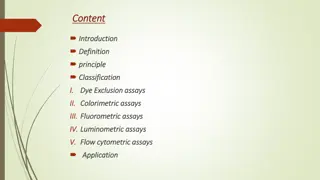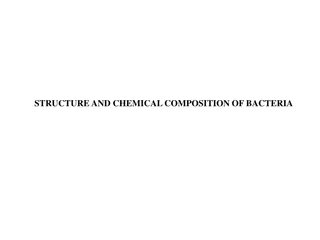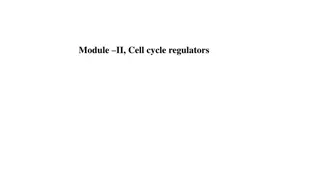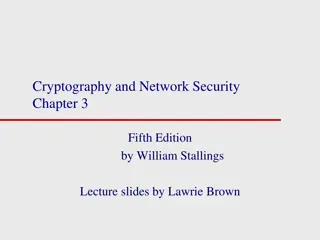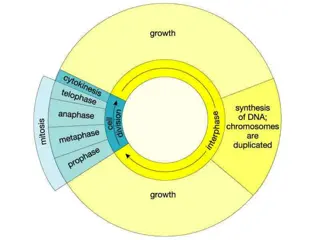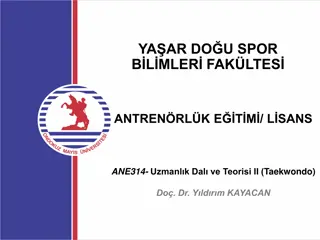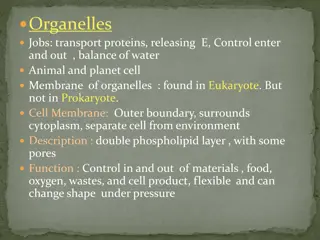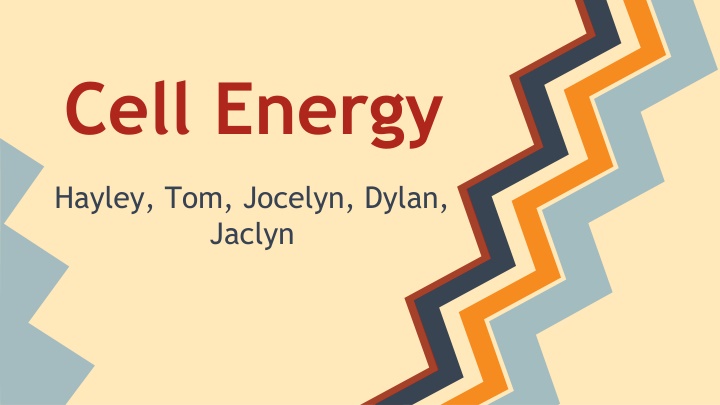
Cellular Respiration and Photosynthesis Processes
Explore the processes of cellular respiration and photosynthesis, including their equations, locations, steps involved, and the significance of anaerobic and aerobic respiration. Learn how cells convert energy and store it in organic compounds through photosynthesis, unlocking the mysteries of energy production in living organisms.
Download Presentation

Please find below an Image/Link to download the presentation.
The content on the website is provided AS IS for your information and personal use only. It may not be sold, licensed, or shared on other websites without obtaining consent from the author. If you encounter any issues during the download, it is possible that the publisher has removed the file from their server.
You are allowed to download the files provided on this website for personal or commercial use, subject to the condition that they are used lawfully. All files are the property of their respective owners.
The content on the website is provided AS IS for your information and personal use only. It may not be sold, licensed, or shared on other websites without obtaining consent from the author.
E N D
Presentation Transcript
Cell Energy Hayley, Tom, Jocelyn, Dylan, Jaclyn
Cellular Respiration Energy and Life Photosynthesis
Cellular Respiration
What is the equation for cellular respiration?
Where does Cellular Respiration occur?
What are the three steps in Cellular Respiration?
1.Glycolysis 2.KREBS cycle 3.Electron Transport Chain (ETC)
Where does Glycolysis take place?
What two respirations occur?
If after Glycolysis there is no oxygen present what process will begin?
Photosynthesis is the conversion of light energy into _____ energy stored in organic compounds.
What is the equation for Photosynthesis?
Within the chloroplast of the PLANT cell.
What pigment is located within the chloroplasts of plant cells?
What are the two groups of reactions and how do they work?
Light Dependent- Trap the energy from the sunlight Calvin Cycle- Uses energy from light reactions to produce sugars. Carbon dioxide and water are needed with light, sugar is produced and oxygen is given off.
Where does the Calvin Cycle occur? (Aka=Dark Reaction)
What are three factors affecting Photosynthesis?
Water Amounts, Temperature, and Intensity of Light
Heres a video to review what you have learned http://ed.ted.com/lessons/the-simple-but- fascinating-story-of-photosynthesis-and-food- amanda-ooten#watch
Energy and Life
Where do autotrophs get their energy?
They get it directly from the sun. Unlike Autotrophs, heterotrophs are unable to produce organic substances from inorganic ones. They rely on an organic source of carbon that has originated as part of another living organism.
They eat food to obtain their energy and also uses organic carbon for growth
What makes up a molecule of ATP?
Vocabulary 1. Autotrophs: organisms get energy ______ from the sun. 2. Heterotrophs: organisms that eat food to obtain their ______. 3. ATP: Adenosine Triphosphate, only releases energy (________ compound). 4. ADP: Adenosine Diphosphate, stores or releases energy (_____ power).
Vocabulary cont. 5. Photosynthesis: The conversion of _____ energy into _____ energy stored in organic compounds. 6. Chlorophyll: Main pigments in ________ (absorbs all colors of light, and reflects back green). 7. Thylakoids: Where __________ begins with the absorption of light pigments. 8. Stroma: Where the ______ cycle takes place.
Vocabulary cont. 9. Light Reactions: Trap ___ from the sunlight. Occurs in the ______. 10. Calvin Cycle: Also known as _______, Produces ______ and occurs in the stroma. 11. Glycolysis: Breaks _____ into two smaller compounds of Pyruvic Acid and produces 2 __. 12. Cellular Respiration: The process where the chemical energy of food molecules is released and changed to _____.
Vocabulary cont. 13. Fermentation: Anaerobic conditions lead to ______ Fermentation and ______ ____ Fermentation. 14. Anaerobic: No oxygen or ATP is produced after _______. 15. Aerobic: Cells must contain glucose, oxygen, and ______ in order to make ATP, CO2 and H2O. 16. Krebs Cycle: 3-C Compound and _____ are converted to CO2, 2 ATP, and high energy electrons. 17. ETC: High energy electron are passed through a chain producing LOTS of ____. (34)
Vocabulary Answers 1. directly 2. energy 3. high-energy 4. medium 5. light, chemical 6. plants 7. photosynthesis 8. Calvin 9. energy 10. Dark reaction, Glucose 11. glucose, ATP 12. ATP 13. Alcoholic, Lactic Acid 14. Glycolysis 15. enzymes 16. oxygen 17. ATP




